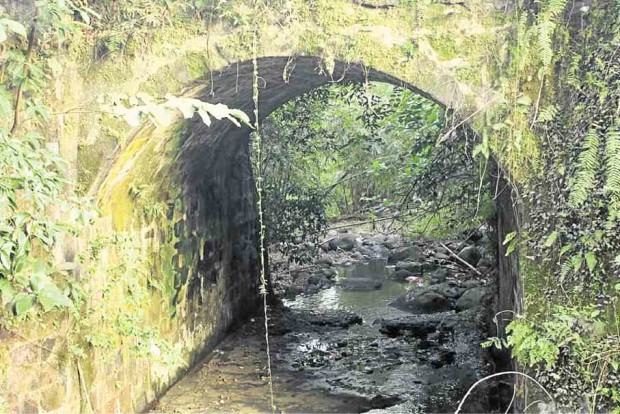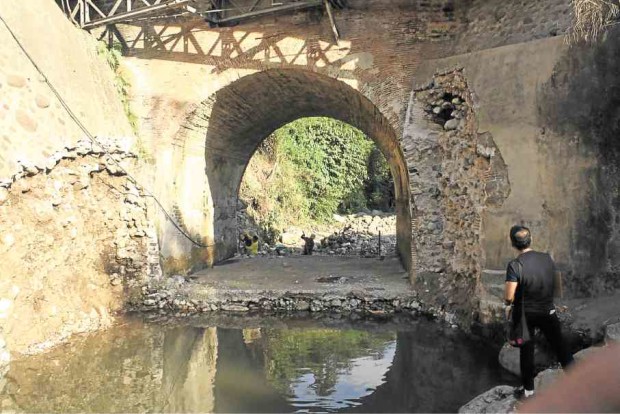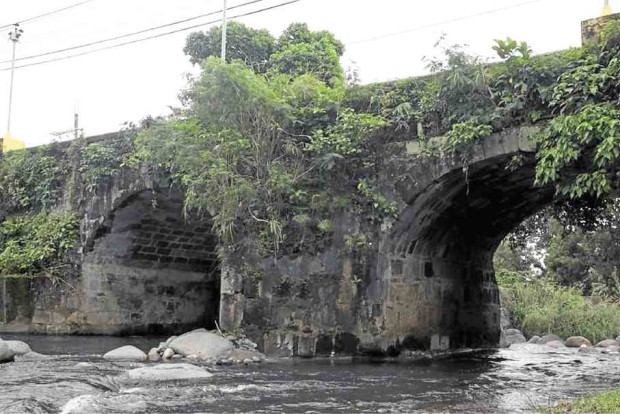Saving links to the past
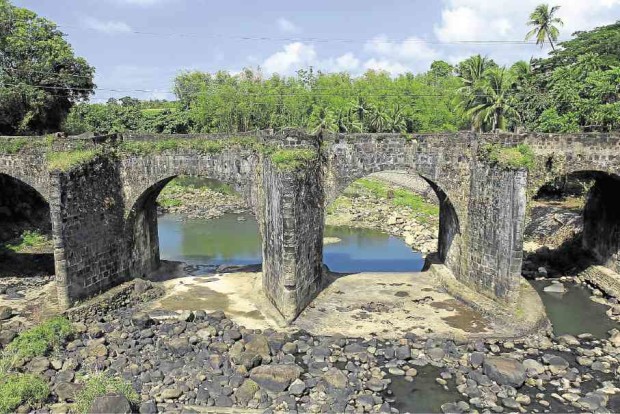
Considered the grandest among the Spanish arch bridges in Tayabas, Puente de Malagonlong spans both banks of Dumaca River to link the villages of Mateuna and Lakawan. —DELFIN T. MALLARI JR.
Tayabas City—Traffic enforcer Junnie Ryan Marcelo was passing by the Tayabas-Sariaya Road in Barangay Malao-a here last year when residents alerted him to the condition of the Puente de Isabel II bridge. He went to take a look and was alarmed by what he saw.
“I saw cracks and holes under the bridge,” he recalled. “The signs were alarming.”
He immediately told local employees about it, and the employees alerted local authorities.
Marcelo’s discovery led to the creation of “Oplan Sagip Tulay” (Oplan Save the Bridge), a team of city government technical people and historians that went out to investigate the state of the Spanish-era stone bridge.
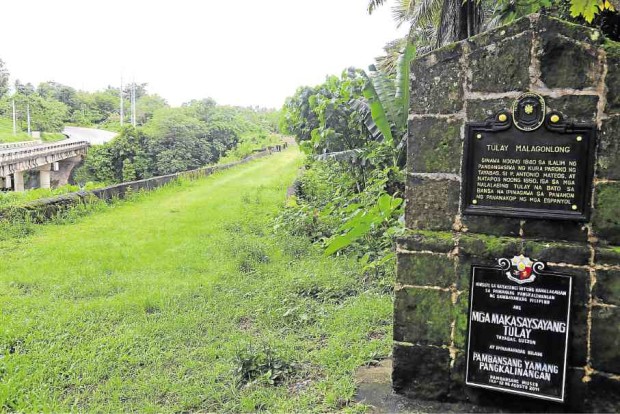
A marker installed near the approach of the Puente de Malagonlong bridge tells its story. —DELFIN T. MALLARI JR.
Built in 1854 to honor Queen Isabel II of Spain, Puente Isabel II is one of the 12 bridges which the National Museum of the Philippines (NMP) declared national cultural treasures on Aug. 12, 2011.
Article continues after this advertisementNMP has defined national cultural treasure as a “unique object found locally, possessing outstanding historical, cultural, artistic and/or scientific value which is significant and important to the country and nation.”
Article continues after this advertisementWhen Oplan Sagip Tulay members inspected the other bridges, they also discovered cracks, most of which were hidden in moss and grass.
The group decided to embark on restoration works to stop the structures’ further deterioration.
These included Puente de Urbiztondo (1854) also in Barangay Malao-a; Puente Despedidas and Puente de Ese in Barangay Camaysa; Puente de Malagonlong (1850) and Puente de Lakawan in Barangay Lakawan; Puente de Gibanga and Puente de Don San Francisco de Asis (1854) in Barangay Calumpang; Puente de Mate in Barangay Mate; Puente de Bae in Barangay Dapdap; Puente de Prinsesa in Barangay Ibas; and Puente de Alitao (1823) in Barangay San Isidro Zone III.
Except for Puente de Alitao, which is under the jurisdiction of the local government and Puente de Gibanga along Maharlika Highway, which is being renovated by the Department of Public Works and Highways (DPWH), the bridges fall under the jurisdiction of the province.
Tayabas Councilor Lovely Reynoso said the city government had initiated moves to transfer the authority over these bridges to the national government but until now the city was still waiting for a response.
“We’re still awaiting action to our request,” Reynoso said. “But lately, we’ve seen DPWH people doing inspection and measurement on some of the bridges.”
Preservation
Oplan Sagip Tulay also involves physical inspection, bridge cleaning, public awareness and information campaign—such as symposia, forums, bridge visits, paintings/photo contest and exhibits.
“Most activities will coincide with the heritage month and our local Mayohan Festival in May,” Reynoso said.
The group is also looking at the prospect of turning these bridges into tourist spots.
“These colonial bridges will greatly contribute to our vision to make Tayabas a heritage city, and a major part of our tourism program,” Reynoso said.
John Valdeavilla, a member of Oplan Sagip Tulay, said the group planned to tap the NMP, the National Commission for Culture and the Arts and other agencies for funding and technical support.
“We also need technical guidance from experts on how to carry out our plans to save our bridges,” he said.
A team of experts from the NMP and Oplan Sagip Tulay discovered during inspection on Gibanga Bridge on March 16 and 17 that DPWH workers had damaged its walls while renovating it.
They suggested a speed limit to motorists and a ban on heavy vehicles crossing the Mate and Prinsesa bridges.
Links
Ryan Palad, national president of the group Adhika (Asosasyon ng mga Dalubhasa may Hilig at Interes sa Kasaysayan), urged the city and provincial governments to move fast to save the bridges.
Palad, a Tayabas native, said diversion roads should be built “not too near the bridges,” urging priority to budget allocations for the protection and restoration of the bridges.
“We are slowly ‘erasing’ our historic bridges even if there’s a local ordinance to protect (them),” he said, “even if there’s a national cultural treasure declaration, even if we already have the heritage law.”
Tayabas is the only place in the country with more than 10 Spanish-era stone bridges, he said.
Most of the bridges still serve motorists, linking Tayabas to Sariaya, Lucban and Pagbilao.
The grandest, Puente de Malagonlong, was built out of adobe blocks, limestone, molasses and eggs for binders—the way it was done during the period.
Historical records said Filipinos built the 136-meter-long (445 feet) bridge for 10 years instead of paying taxes to the colonial government. The bridge was closed in 2004 with the construction of a concrete one.
An adobe stone marker from the National Historical Institute, which stands at the end of Malagonlong, attests to its historical importance.
